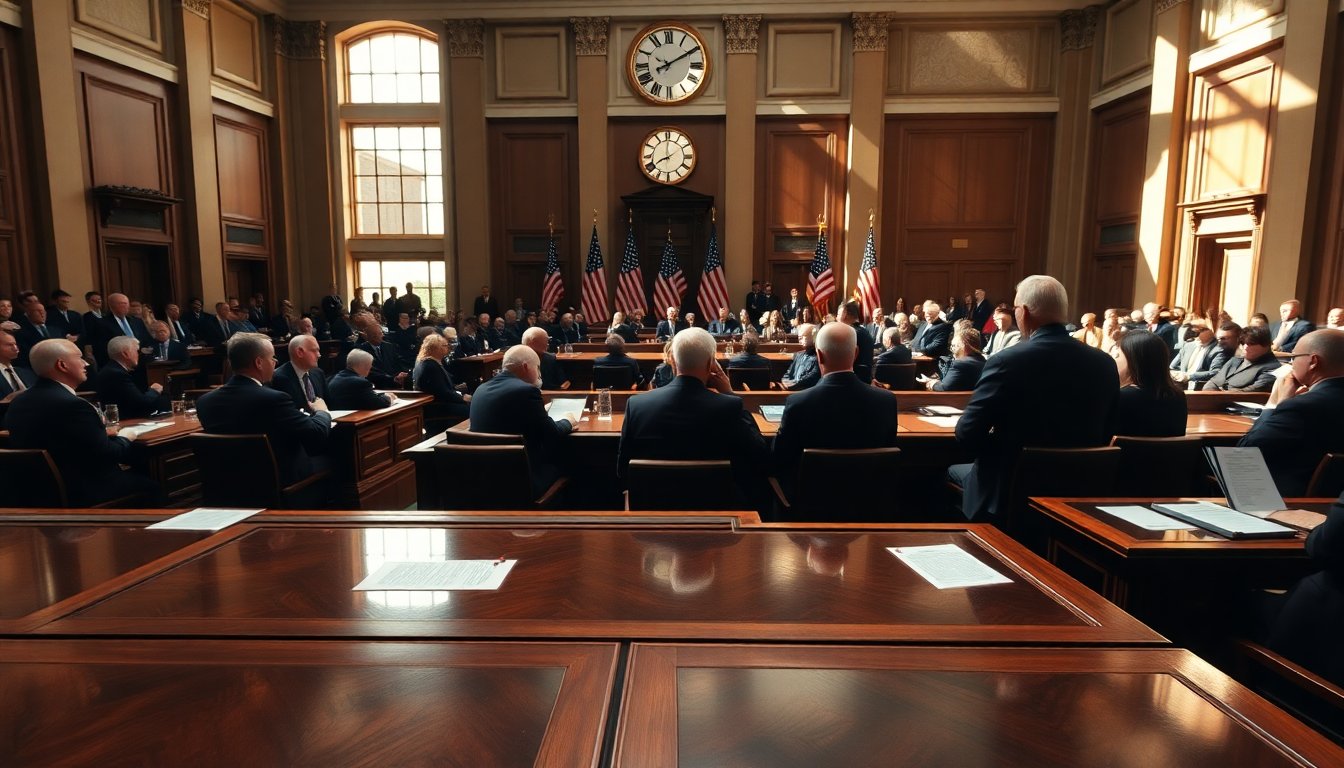Table of Contents
In a remarkable turn of events, Congress swiftly confirmed the victory of Donald J. Trump in a session characterized by its lack of tension and drama. This moment stands in stark contrast to the previous electoral cycle when the atmosphere was charged with conflict and controversy. The session showcased a smoother process and highlighted the evolving nature of political transitions in the United States.
The certification process is a crucial step in the democratic system, ensuring that the results of the electoral vote are formally acknowledged. In this instance, Vice President Kamala Harris played a pivotal role, announcing Trump’s win with an emphasis on unity and forward momentum.
Context of the electoral certification
The certification of election results is an essential procedure outlined in the U.S. Constitution, designed to affirm the legitimacy of the electoral process. Traditionally, this event occurs in January, following the presidential election held in November. However, the atmosphere surrounding this certification was markedly different from previous instances, when tensions ran high amidst allegations of fraud and significant public unrest.
This Congress session saw lawmakers from both parties come together in a show of cooperation that was unexpected given the current political climate. The absence of heated debates or protests outside the Capitol was a notable departure from the past, as many observers anticipated disruptions similar to those witnessed in earlier electoral cycles. Instead, the event unfolded with a sense of decorum and respect.
Comparing past and present certification processes
The previous certification was marred by chaos as rioters stormed the Capitol, seeking to overturn the election results. The aftermath of that day left deep scars on the political landscape, highlighting the fragility of democracy in America. In contrast, the recent proceedings unfolded without any incidents, reflecting a collective desire to uphold the electoral process.
The differences in the two sessions can also be attributed to shifts in public sentiment and party dynamics. Following a tumultuous election period, leaders recognized the importance of restoring faith in the democratic system. By ensuring a smooth certification, they aimed to signal that the electoral process remains intact and respected.
The role of political leaders in the certification
Vice President Kamala Harris’ presence at the forefront of the session was significant. As the first female Vice President, her leadership during such a pivotal moment underscores the progress made in American politics. Harris addressed the Congress with a focus on the importance of unity and the need for cooperation to ensure a productive political environment moving forward.
Moreover, the cooperation displayed by both parties during the session demonstrated a willingness to prioritize the integrity of the electoral process above partisan interests. This shift in attitude could pave the way for more constructive dialogue and collaboration in the future, fostering a healthier political climate.
Public perception and future implications
The smooth certification of Trump’s victory may have implications for public perception of the political system. Citizens who witnessed the chaos of the previous certification might feel a renewed sense of confidence in their elected officials and the processes that govern them. This event could serve as a turning point, encouraging greater civic engagement and participation in future elections.
Looking ahead, the focus will likely shift to how political leaders harness this momentum to address pressing issues facing the nation. Whether it be economic recovery, social justice, or foreign relations, the cooperation displayed during the certification could lay the groundwork for bipartisan efforts moving forward.
In conclusion, the swift certification of Donald Trump’s victory by Congress marks a significant moment in American political history, contrasting sharply with the turmoil of the past. The session not only reaffirmed the democratic process but also highlighted the potential for progress through unity and collaboration. As the nation moves forward, the lessons learned from this event could be crucial in shaping a more inclusive and effective political landscape.


